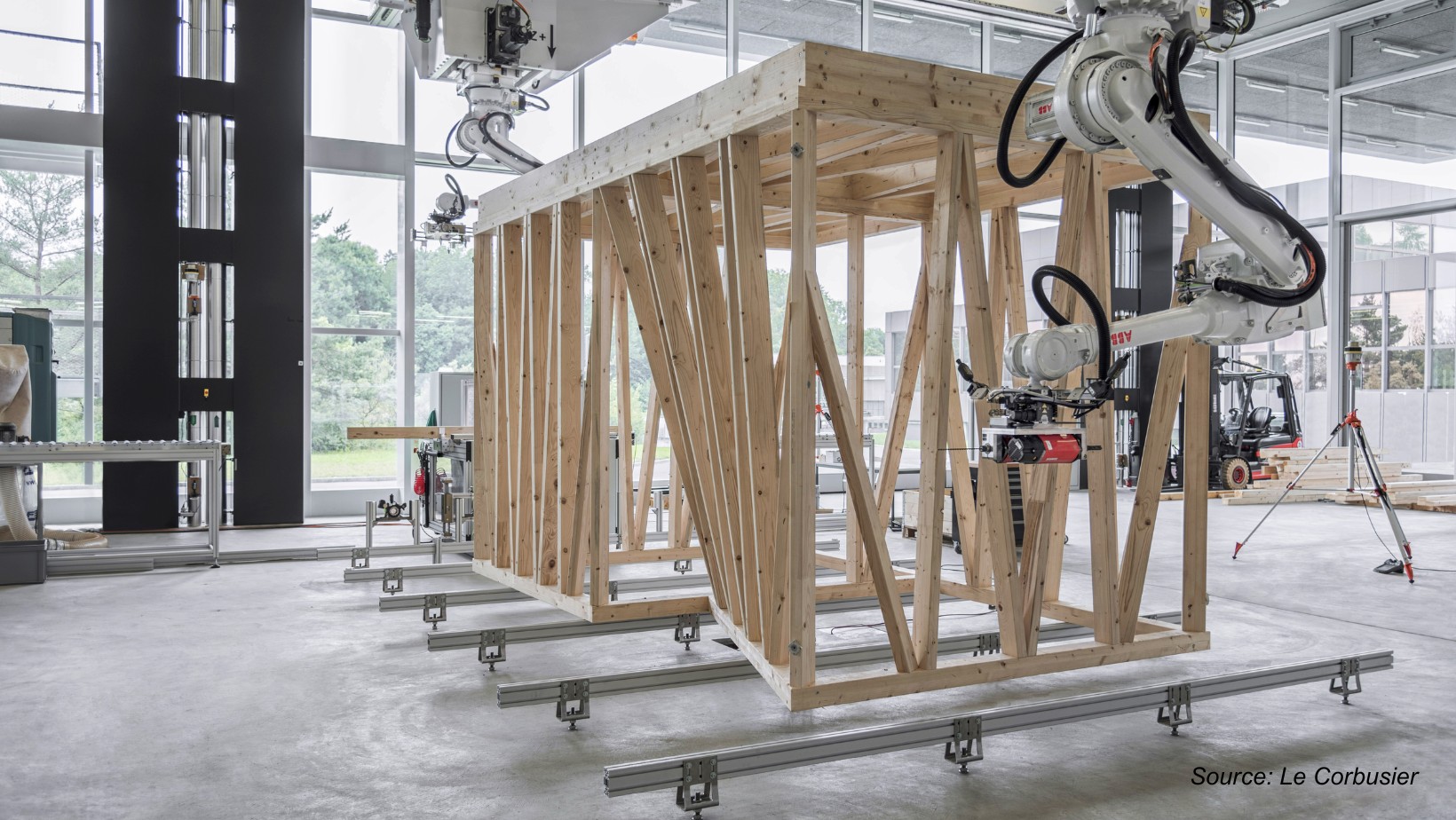How Technology and Innovation Are Shaping the Future of Canada’s Construction Industry
Published: 2025-09-10

Canada’s construction sector is in the midst of a dynamic transformation, driven by the rapid expansion of major urban hubs like Toronto, Vancouver, and Montreal alongside the rise of secondary and tertiary markets, while the steady influx of hundreds of thousands of newcomers each year fuels unprecedented demand for housing, rentals, and community infrastructure, prompting construction companies to adopt advanced building technologies, smart solutions, and sustainable materials to accelerate project delivery and meet evolving environmental standards. According to Next Move Strategy Consulting, the Canada Construction Market was valued at USD 283.63 billion in 2024, and is expected to be valued at USD 296.44 billion by the end of 2025. The industry is projected to grow, hitting USD 349.78 billion by 2030, with a CAGR of 3.36% between 2025 and 2030.
In this blog, we will discover how Canada’s construction sector is reshaping its future, driven by rapid urban growth, cutting-edge technologies, and sustainable building practices. From downtown high-rises in Toronto to eco-friendly, mixed-use communities in Vancouver, the integration of smart solutions and green materials is revolutionizing how projects are planned, executed, and experienced. Positioned at the crossroads of unprecedented population growth and digital innovation, Canada’s construction market stands as one of the most dynamic, resilient, and future-ready segments of the nation’s building landscape.
Canada Set to Build Four Million Homes by 2031 with Tech-Driven Efficiency
Canada’s ambitious goal to build nearly 4 million new homes by 2031 is more than a response to a housing shortage, it’s a strategic move to drive economic growth and community resilience. As urban centers, suburbs, and rural areas ramp up residential development, advanced construction technologies are playing a pivotal role in accelerating delivery, improving quality, and reducing environmental impact.
In high-pressure markets like Toronto and Vancouver, smart planning and modular building methods are helping reduce project timelines and costs. Meanwhile, in smaller towns and emerging urban corridors, digital tools such as Building Information Modeling (BIM) and prefabrication are making large-scale residential projects more viable. This widespread construction activity is creating a ripple effect, stimulating local supply chains, creating jobs in trades and manufacturing, and encouraging regional economic development.
Beyond just housing, this growth supports mixed-use and urban revitalization efforts, integrating homes with retail, green spaces, and services to form more livable, connected neighborhoods. By leveraging technology, Canada is not just increasing housing supply but also its building smarter, more efficient communities that support long-term prosperity and sustainability across the country.
Canada’s $116B Plan is Transforming Construction and Infrastructure – Here’s How
Canada’s construction industry is undergoing a profound transformation under the Investing in Canada Plan, a national initiative allocating over USD 116.18 billion to more than 100,000 infrastructure projects. With 92% of these projects already completed or underway, the program is not only revitalizing cities and communities but also reshaping how construction is planned, executed, and sustained, ushering in a new era of smarter and more resilient infrastructure.
From major transit expansions in Toronto and Montreal to clean water networks in rural Nova Scotia, the scale and diversity of developments are setting new benchmarks for efficiency and sustainability. Construction companies are increasingly adopting Building Information Modeling (BIM), modular construction, and digital permitting systems to deliver projects faster and with greater precision, while meeting stringent environmental standards.
These investments extend far beyond physical upgrades; they are driving a technological and cultural shift within the industry. Urban centres are seeing a rise in high-density, mixed-use developments, while smaller communities benefit from advanced schools, health-care facilities, and energy-efficient housing. Provincial and municipal governments are also leveraging this funding to modernize aging infrastructure with a focus on climate resilience, ensuring that new builds can withstand environmental challenges for decades to come. By combining massive capital investment with cutting-edge construction practices, Canada’s USD 116 billion push is future-proofing the built environment, enhancing productivity, and creating a construction industry that is smarter, greener, and more adaptable than ever before.
Digital Infrastructure and Intralogistics Software Powering the Future of Construction Industry
Canada’s construction market, covering everything from residential buildings and commercial high-rises to transportation corridors and heavy-civil works, is embracing advanced digital technologies to tackle growing project demands driven by urban expansion, infrastructure renewal, and climate goals. Supported by initiatives like the National Research Council’s Construction Sector Digitalization and Productivity Challenge, the industry is integrating innovations such as digital permitting and virtual modeling to streamline workflows, enhance safety, improve productivity, and address labor shortages and cost pressures.
At the backbone of this digital revolution lies Canada’s expanding digital infrastructure. In May 2024, Transport Canada announced up to USD 37.1 million under the National Trade Corridors Fund to support nineteen digital infrastructure projects, ranging from real-time tracking at ports to IoT-enabled rail and road logistics to ensure materials flow seamlessly to construction sites and reduce supply-chain bottlenecks. By bolstering connectivity and data-sharing capabilities across transportation networks, these investments are laying the groundwork for predictive logistics, on-time deliveries, and lower overheads—critical factors for tight-margin construction contracts.
Building on this foundation, intralogistics software is transforming how Canadian firms manage materials, equipment, and information within and between sites. Early participants in the NRC challenge report that digital permitting pilots are shaving weeks off approval cycles, while cloud-based platforms, like PCL Construction’s recently launched Digital Twin Services, integrate live site feeds with 3D BIM models to cut field rework by up to 15% and accelerate issue resolution.
Artificial intelligence further amplifies these gains. Machine-learning modules embedded in intralogistics suites analyze historical usage patterns to forecast material requirements, optimize just-in-time ordering, and trigger automated replenishment alerts keeping crews productive and minimizing waste. In select pilot sites, computer-vision systems have been deployed to monitor worker safety and equipment utilisation, flagging non-compliance or idle assets and enabling swift corrective action.
These technological advancements are more than isolated pilots; they are reshaping industry standards. According to KPMG in Canada’s June 2025 Digital Maturity Survey, 90% of construction executives now view digital tools as critical to maintaining competitiveness and addressing chronic labour constraints, with procurement policies increasingly favoring bidders who demonstrate technology-driven efficiencies. As 5G networks extend into major urban corridors and cloud-based data-centre capacity expands nationwide, the sector is poised for widespread adoption of connected construction sites, autonomous monitoring, and predictive analytics.
Digital Innovation Transforming Productivity in Canada’s Construction Industry
Canada’s construction sector is experiencing a major transformation driven by the National Research Council’s Construction Sector Digitalization and Productivity Challenge. As a key component of the Platform to Decarbonize the Construction Sector at Scale, this initiative supports research and pilot projects that implement advanced technologies like Building Information Modeling (BIM), digital permitting systems, and modular construction in practical settings. By encouraging collaboration among industry, academia, and government, the program is developing data-driven solutions that accelerate project timelines, enhance quality, and minimize environmental impact.
Results are already emerging. Participants report faster approval processes through digital permitting, significant reductions in rework and material waste via BIM-enabled coordination, and up to a 30% cut in construction schedules through modular building methods. These efficiencies are enabling even smaller firms to compete on complex, fast-track developments. As these innovations scale from pilot to industry standard, Canadian builders are gaining the tools needed to improve productivity, manage costs, and deliver smarter, more resilient structures.
For developers, planners, and construction professionals across Canada, the direction is clear: embracing digital technology is not just beneficial, it’s imperative. As demand intensifies across residential, commercial, and infrastructure segments, the integration of advanced digital tools will be key to ensuring the sector’s competitiveness, sustainability, and long-term success.
Looking Ahead: How Digital Foundations Are Revolutionizing Construction Today
As digital infrastructure and intralogistics software transition from pilot projects to mainstream practice, Canada’s construction sector stands at the threshold of a new era. The integration of real-time data networks, cloud-hosted digital twins, AI-driven material forecasting, and modular prefabrication is delivering tangible productivity gains, cost savings, and sustainability benefits. With continued investment in connectivity, via 5G rollouts and expanded data centres and supportive policy frameworks that reward technology-enabled efficiencies, Canadian builders and developers are well positioned to meet growing demand, address labour and supply-chain constraints, and achieve ambitious climate targets. By embracing these digital tools end-to-end, the industry will not only enhance project delivery today but also lay the groundwork for smarter, more resilient infrastructure that serves communities for generations to come.
About the Author
 Mayurima Roy is a seasoned researcher with over two years of experience, specializing in various industry verticals such as elevator market, recycling market, and construction market. With a strong passion for writing, she views blogging as a valuable platform to share her industry insights and expertise. Outside of tracking market trends and developments, Mayurima enjoys crafting, cooking, and exploring her creativity through photography.
Mayurima Roy is a seasoned researcher with over two years of experience, specializing in various industry verticals such as elevator market, recycling market, and construction market. With a strong passion for writing, she views blogging as a valuable platform to share her industry insights and expertise. Outside of tracking market trends and developments, Mayurima enjoys crafting, cooking, and exploring her creativity through photography.
About the Reviewer
 Debashree Dey is a skilled Content Writer, PR Specialist, and Assistant Manager with strong expertise in Digital Marketing. She specializes in crafting visibility strategies and delivering impactful, data-driven campaigns. Passionate about creating engaging, audience-focused content, she helps brands strengthen their online presence. Beyond work, she draws inspiration from creative projects and design pursuits.
Debashree Dey is a skilled Content Writer, PR Specialist, and Assistant Manager with strong expertise in Digital Marketing. She specializes in crafting visibility strategies and delivering impactful, data-driven campaigns. Passionate about creating engaging, audience-focused content, she helps brands strengthen their online presence. Beyond work, she draws inspiration from creative projects and design pursuits.

















Add Comment